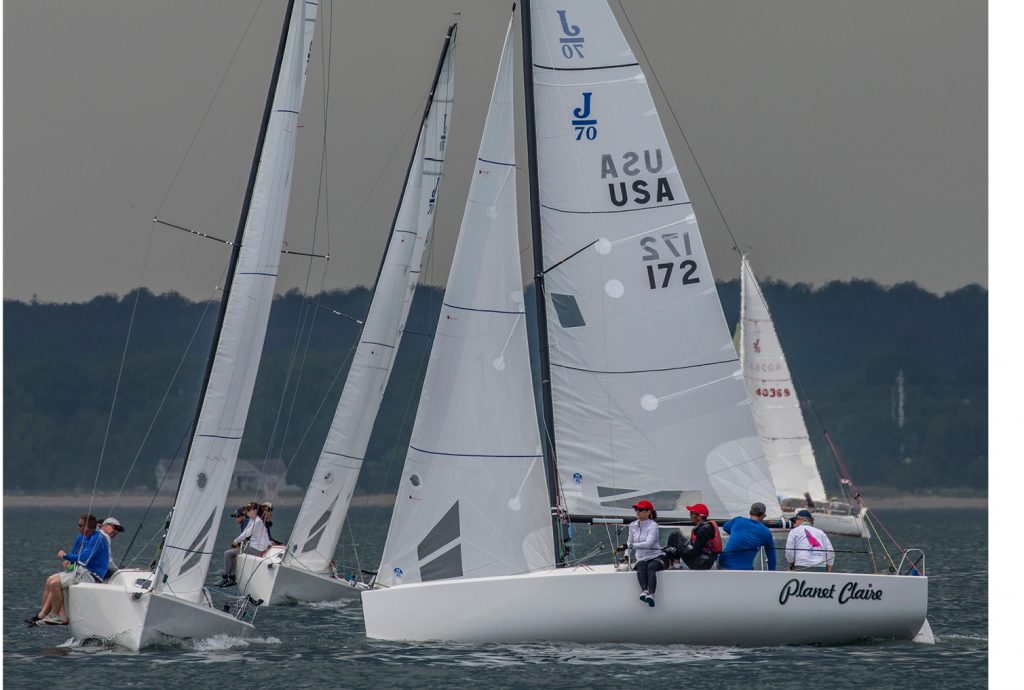When it comes to strategy on a beat, my most valuable guiding principle of all time has been to sail the longer tack first. It’s amazing how often this works and how much you can gain by doing it.
The geometry of your racecourse is one factor you must consider in any strategic plan. And the most important geometric question by far is whether one tack is longer than the other. Here are some things to consider.
• Defining the longer tack. There is a longer tack whenever you have to sail different lengths of time on port and starboard tacks to get to the windward mark. This could be caused by several factors including bad mark placement, a persistent wind shift, current or the fact that you sailed out to a side of the course. In order to find the longer tack, you must first locate the windward mark and then estimate how much sailing time you have left on each tack.
• Finding the longer tack. There are several ways to determine which tack is longer. You can eyeball the mark to see if you’re pointing closer to it on port or starboard tack. Or you can figure this mathematically using bearings and compass headings.
Another way is to go head to wind before the start and see whether the first mark is to the right or left of your bow. Or, after the start, locate the closer layline. The longer tack is the one that takes you away from this layline.

The “longer tack” to the windward mark is the same one where your bow is pointed closer to the mark. © Stephen R Cloutier
• When it works. By sailing the longer tack, you are heading for the middle of the course. The only time when this won’t work strategically is when the shorter tack takes you, for example, toward a persistent shift or better breeze. In almost all other situations, sailing the longer tack first will give you a much better chance of success.
This is especially true when you’re not sure what the wind will do next. In this case, being closer to the middle will give you more options for playing the next shift.
Getting onto the longer tack also becomes more important as one tack grows increasingly longer than the other. It may not make much difference which tack you sail when port and starboard are within 10% in length. But when one is twice as long as the other, that’s a real reason to take the longer one.
• Find and protect a lane. If you want to go fast up the first beat, one of the best things you can find is a lane of clear air on the longer tack. Start looking for this right after the start and, once you find it, work hard to maintain your lane.
This article originally appeared in David Dellenbaugh’s Speed & Smarts, The newsletter of how-to tips for racing sailors. If you want to sail faster and smarter, log onto SpeedandSmarts.com. ■
A resident of Easton, CT, Dellenbaugh was tactician and starting helmsman for America3’s successful defense of the America’s Cup in 1992. He’s a Lightning World Champion, two-time Congressional Cup winner, seven-time Thistle National Champion, two-time winner of the Canada’s Cup, three-time Prince of Wales U.S. Match Racing Champion, and a winner of the U.S. Team Racing Championships for the Hinman Trophy.




